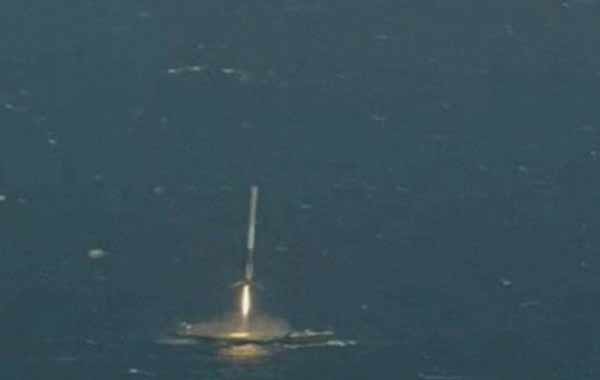California, US (BBN)-An inflatable habitat has launched into space, atop a private SpaceX rocket contracted by Nasa.
The inflatable room will attach to the International Space Station (ISS) for a two-year test and become the first such habitat to hold humans in orbit, reports BBC.
In a major success for SpaceX, the reusable main stage booster of its rocket successfully landed on an ocean platform for the first time.
Staff at SpaceX mission control at California cheered as the news came in.
The inflatable habitat was built by Nevada company Bigelow Aerospace and is intended to pave the way towards the use of such rooms for long space trips, including to Mars.
Its launch is the first Nasa cargo run for SpaceX since its June 2015 mishap, when an unmanned cargo rocket exploded soon after take-off.
The Falcon 9 rocket lifted off on schedule at 16:43 local time (20:43 GMT) from Cape Canaveral Air Force Station in Florida.
A capsule, containing the Bigelow Expandable Activity Module (Beam) alongside other supplies for the ISS and its crew of six, is scheduled to dock at the Space Station on Sunday morning, starting at around 09:30 GMT.
After putting the Dragon capsule into orbit, the main-stage booster of SpaceX’s Falcon 9 rocket separated and landed on a floating platform, known as a drone ship, off the coast of Florida.
This accomplishment, attempted four times previously without success, is part of the firm’s effort to kick off a new era of reusable rockets and affordable private space travel.
Despite the difficulties with its ocean platform configuration, SpaceX – run by tech entrepreneur Elon Musk – did successfully land a Falcon 9 on the ground, vertically, last December.
Meanwhile, the launch is a huge moment for Bigelow Aerospace, the project of real estate billionaire Robert Bigelow.
The company has launched prototype expandable habitats before, but none have been occupied by humans.
This 1,400kg contraption, once attached and inflated in about a month’s time, will be visited periodically by ISS personnel.
Made of many layers of fabric and covered with a flexible Kevlar-like material, the Beam will be tested to see how well it stands up to fluctuating temperatures and high levels of radiation.
BBN/SK/AD

No Subscription? You Are Missing Out!
Join the business leaders of Bangladesh who rely on BBN's original reporting and in-depth analysis on business scenario of the country. We send only one daily email. No Spam Guaranteed!









